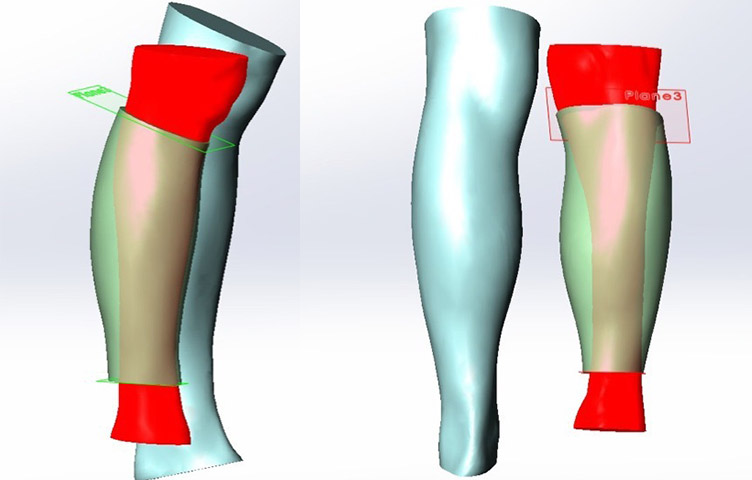3D Scanning for Prosthesis

Medical manufacturing has come a long way with the advancement of new technology and materials. The fastest growing sectors are arguably orthopedics, reconstructive devices, hip implants, knee replacements, arthroscopy, and spinal implants.
The traditional way to manufacture natural-looking and customized prosthetic body parts used to involve making castings out of plaster and then developing a computer-aided design (CAD) model. With the emergence of non-contact 3D scanning, the prosthetic device manufacturing process takes considerably less time, thanks to much faster data collection and improved accuracy. When combined with 3D printing (additive manufacturing), 3D imaging technologies reduce design and development time and are now commonly used for surgical guides (such as conjoined twin separation) and prosthetics. The Lab Services team at Industrial Inspection & Analysis (IIA) is well equipped to provide the accurate 3D scanning you need for the design and development of life-changing prosthetic devices.
The Challenge
Since the human body consists primarily of irregular shapes, traditional prosthetic manufacturing methods have often resulted in improper fit, patient discomfort, and limited functionality. Customizing a fitted prosthetic device that evenly distributes pressure has historically been one of the greatest challenges facing medical manufacturers. Today, with highly accurate 3D models of the body, manufacturers are easily able to make custom prosthetic devices that fit perfectly and are comfortable for patients.
Greater Accuracy, Better Design
3D CT or MRI scanning was originally developed for the medical field; and surgeons and doctors have used these technologies for years. However, in those early years, the scanned data was only presented and analyzed in 2D. With 3D printing (or additive manufacturing), the 3D scanned information can be converted into a highly accurate 3D model by systematically building it layer by layer from the ground up. Utilizing this technology, the 3D models can be used for diagnostic, pre-surgical aids and patient engagement purposes. The result is greater effectiveness and efficiency for clinicians, researchers, and hospitals, as well as improved outcomes for patients.
Rapid Production
In the past, many attempts were made to build a CAD model of an implant; but due to complex surfaces, these attempts proved difficult and frustrating, resulting in several unsuccessful rapid prototype iterations. Furthermore, it was difficult to reproduce medical devices without an existing CAD model.
Periodically, artificial medical devices need to be checked to detect wear and determine whether or not they need to be repaired or replaced. 3D scanning can solve all these problems by efficiently and quickly producing new matching parts by reverse engineering and computer aided verification.
IIA Can Help
The focus and priority of IIA’s Lab Services group is to provide high-quality, cost-effective, advanced 3D scanning, modeling, analysis, and geometry re-creation services that save time for medical manufacturers. Our highly trained professionals can promptly scan and verify medical devices and components throughout the development of your product.
Scanning applications include mating component analysis, surface area analysis, and full CAD model development. We are equipped and prepared to personally assist you from pre-production device development into full production. Our team will personalize our services to precisely meet the unique needs of your project. We pride ourselves on our quality service and are confident that we can help you achieve more rapid and cost-effective production results.




